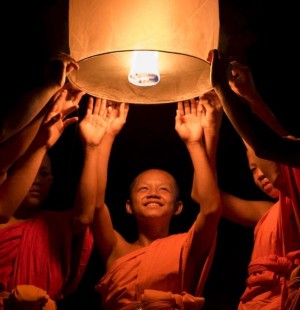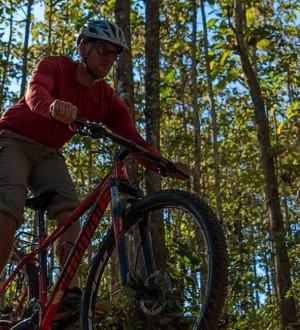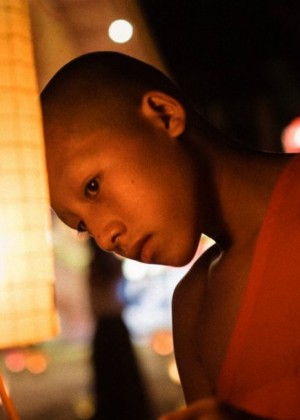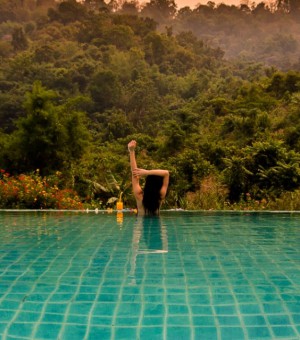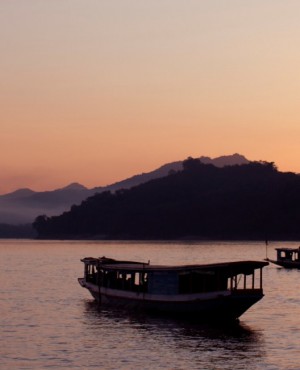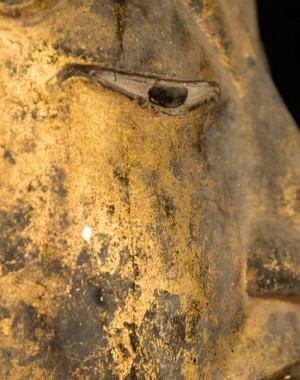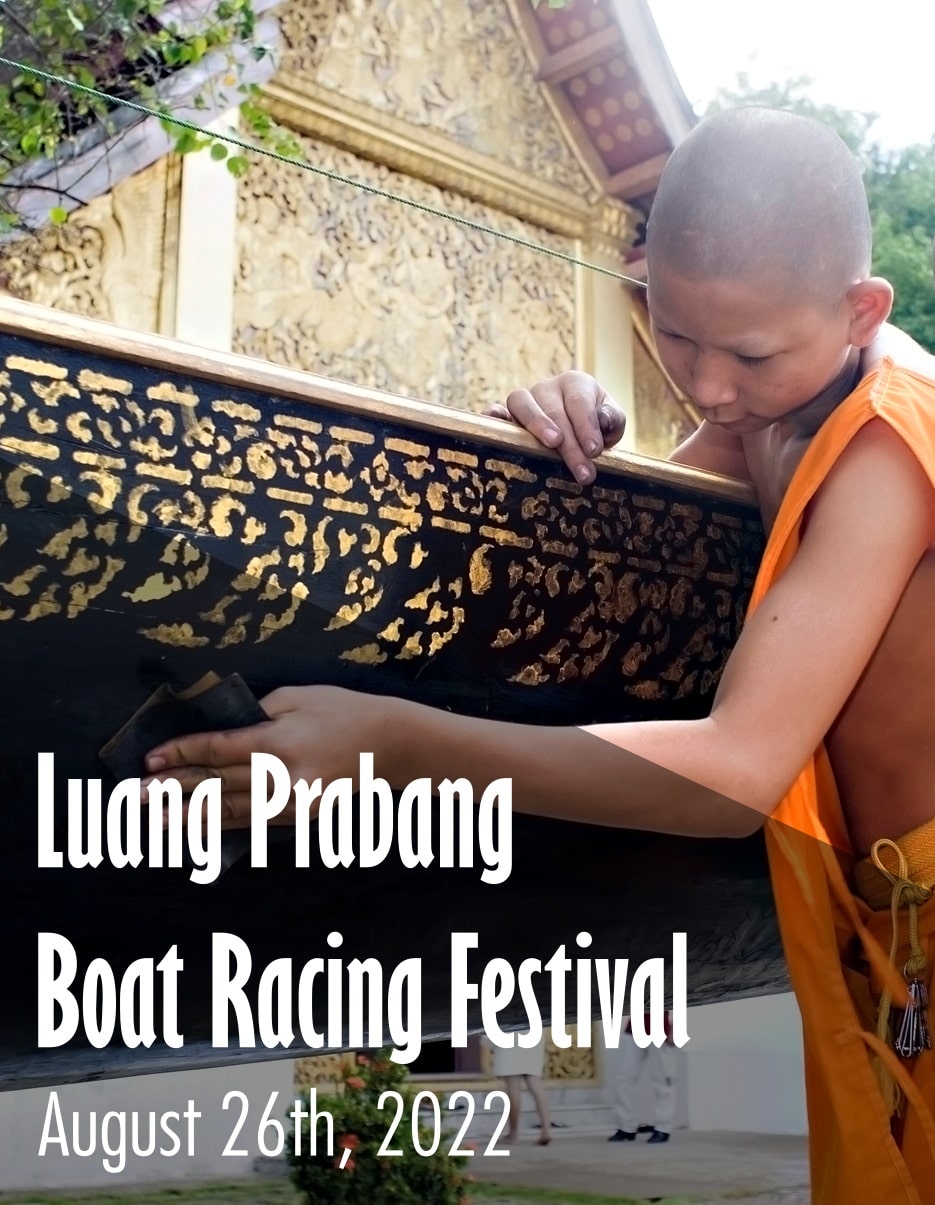Laos travel
Landlocked in the heart of the Indochinese peninsula, formerly known as the country of "a million elephants", Laos is a bastion of exploration and land of adventure. During a circuit in Laos, it is in a natural environment still preserved, between mountains covered with thick forests opening onto small valleys and villages along the King Mekong, that you will go to meet a palette incredible diverse human, with some 80 ethnic minorities in Laos. A trip to Laos is also a destination with spiritual overtones, in a rocked region living with Buddhism. A philosophy of life that can be found in its many temples with bold architecture, but above all which has permeated the spirit of a discreet local population, almost nonchalant but disconcertingly bewitching.
WHERE TO GO IN Laos ?

guaranteed! REQUEST A FREE QUOTE
WHAT TO DO & SEE IN Laos ?

MORE INSPIRATION
Let's start your day city tour in Luang Prabang with a visit to the Royal Palace Museum, which hosts a range of interesting artifacts. From there, you walk to the nearby Wat Mai, which is one of Luang Prabang’s largest and most richly decorated temples.
Continue your tour seeing the city’s oldest temple of Wat Sene and the magnificent Wat Xiengthong with its roofs sweeping low to the ground, which represents classical Laotian architecture.
Continue your visit to the Traditional Arts and Ethnology Centre to learn about Laos’ many ethnic cultures.
You can take a short walk around the small roads of the city center, watching the life of local people, and visiting the traditional house of Heuan Chan, the Chantal wooden house dating back to 100 years old.
Late afternoon, you can climb up to the top of Mount Phousi for an enjoyable exploration of the sacred, gilded stupa as well as a panoramic sunset view of the city and the Mekong River.
Sai Bat (Morning Alms) is a longstanding tradition in Laos Buddhist culture. In observing it, the devoted offer food to monks throughout the Luang Prabang every morning.
Starting from early morning around 05:30 to 06:30 am in March to October and 06:00 to 07:00 am in November to Febuary.
Held on the main street in every morning, there are many places through the town and inside every temples. Here just give the main procession: in front of Xiengthong temple, Luang Prabang Primary School and Natonal Museum.
Observe the ritual in silence and contribute an offering only if it is meaning for you and can do so respectfully. If you do not wish to make an offering, please keep an appropriate distance and take care not get in the way of the monk procession or those making offerings.
An icon just outside the city, Kuang Si Waterfalls are stunning and SO worth seeing it in person (the water really is that blue!). If you are fairly confident and comfortable on a motorbike, you could rent one and get there on your own.
Minivans and Tuk-Tuks are also available to take you there. From the entrance, it is a small hike up to the waterfalls that will take you past rescued black bears hanging out at the sanctuary. It will only be a few minutes before you start hearing the water. The area is packed with tourists for most of the day, so consider going early in the morning and try to be the first person in if you want to avoid the crowds. To get a panoramic view of the waterfalls from high up, continue your hike to the (not so) secret waterfalls.
You can embark on a leisure cruise upstream on the Mekong River, which also gives you a breathtaking view of the tranquil countryside, before reaching the mysterious Pak Ou Caves, two linked caves crammed with thousands of gold lacquered Buddha statues of various shapes and sizes left by pilgrims.
One of the easiest and most enjoyable ways to see the elaborate interiors of the Pak Ou caves is to book a guided caves tour, where you will be able to get detailed information on the site.
Also just on the outskirts of Pakse, Wat Phu is an impressive Khmer temple that reminds me of a miniature version of Angkor Wat in Cambodia, though it was actually built in the 7th century, way before Angkor Wat.
Wat Phu does not see as many tourists, though, so it’s a nice change of atmosphere. This will make a nice day trip from Pakse, just make sure to pile on sunscreen as there’s very little shade!
The Bolaven Plateau is known for its cooler temperature being located high above the Mekong Valley and famous for its sprawling coffee plantations and many waterfalls. Explore the delights of this area, accompanied by a knowledgeable coffee guide, by vintage jeep. The tour starts with a visit to several villages on the plateau and a break at the secluded Tad Moan waterfall, which offers the perfect place to relax and swim. After exploring the wonders of the plateau, head to the Mystic Mountain coffee plantation to witness and learn about the coffee roasting process. You will have time to explore the plantation’s verdant surrounds while your hosts prepare a delicious home-cooked lunch. For those wishing to delve deeper into the process of coffee production, there is the option of a homestay to learn some of the techniques of the trade from the owner of the plantation and further explore the area.
Hidden among green-carpeted karsts and pockets of jungle, ruggedly beautiful Vang Vieng is no longer the party town that gave it its bad reputation, but a lot of fun can still be had here. For full-on adventure, kayak down the Nam Song at white-water rafting speeds. Pull up at the river’s edge and swap paddles for a harness for a zipline experience taking you above the tree-tops, finishing with a steep descent that makes you certain you’ll plunge into the river below.
If you prefer being underground to flying through the air, explore Vang Vieng’s best caves. Tham Xang (Elephant Cave) is home to ancient Buddha statues, a Buddha footprint and an elephant-shaped stalactite. Tham Hoi and Tham Loup also house Buddha statues along with the names of 100 people who hid in the cave during the wars. To explore Tham Nam (Water Cave), jump in a rubber ring and tube through the dark, water-filled cave with only a headtorch and rope for guidance.
Continue the adventure at the Blue Lagoon on the slides, swings and jumping platforms erected around the sparkling turquoise waters. If you need a break, Vang Vieng offers many relaxing locations, including riverside hammocks where you can watch the world go by with a Beer Lao in hand.
Formerly a French colony, charming Vientiane is South-East Asia’s answer to Paris. Visit Wat Sisaket, the oldest temple with thousands of miniature Buddha statues, and the former royal temple of Wat Prakeo, which previously housed the famous Emerald Buddha Image.
Enroute to Lao’s national icon, the precious and sacred structure of That Luang Stupa, you will have the opportunity to take some pictures of the imposing Patuxay Monument, which is known as Vientiane’s own Arc de Triumph.
For an insight into the tragic history, visit the COPE centre. More bombs were dropped on Laos per capita during the Vietnam War than any other country in history. Many bombs failed to detonate, and still injure Laotians today, hence the importance of COPE. This organisation educates visitors on the problem, and provides victims with prosthetic limbs and rehabilitation.
Despite suffering heavy bombardment at the hands of the USA, Vieng Xai, a valley of verdant hills, quaint houses and manmade lakes, is astonishingly beautiful. Of the hundreds of caves in the district, only seven are open to visitors. But even this small handful will give you a unique insight into war-time Laos.
This is no ordinary cave trip. These rock shelters which were inhabited by civilians and politicians during the nine years of war are more like an intricate network of museums. The old living quarters haven’t changed much, and with tour guides and audio guides available, it’s a real opportunity to see for yourself just how big a role the caves played during the war.
Tham Than Souphanouvong is a lair fit for royalty and housed Prince Souphanouvong, or ‘the Red Prince’. It has wooden floors, bedrooms, meeting rooms and storage areas for artillery. Outside the entrance is the Prince’s house where he lived after the war. Dive into politics at Tham Than Kaysone, where the Prime Minister from 1975-1992 lived. Here you’ll find busts of Lenin and Che Guevara. One of the deepest caverns, Tham Xieng Muang was used as a hospital.
If you thought you didn’t need to pack a coat for Laos, think again. At an altitude of 1,626m, mountainous Phongsali gets cold, but it’s worth bracing it for the splendid panoramic views. The cloud-cladded mountains and a vast, verdant jungle are just some of the reasons this region is Laos’ go-to trekking spot. Trekking tours include hikes up mountains with forest views, staying with the unique Akha Puxo people and descending into a valley to see rice paddies sprawl out around you.
Due to China’s influence on Phongsali, the architecture is fascinating, with buildings fluctuating between industrial Chinese concrete blocks to tin-roofed houses and mud huts. To feel like you’ve travelled to China, visit the Yunnanese shophouses and the Chinese temple. For a history of Phongsali, head to the Museum of Tribes to find information, photos and colourful costumes.
Head south to Si Phan Don, explore the local peaceful villages of Ban Khone, where you will see an array of relics from the French colonial era and retrace the old colonial past, including old French colonial buildings and the remnants of the first Lao railway with its locomotive.
Continue to discover the 4000 islands area by tuktuk and visit the marvelous Liphi waterfall, also called the ""Corridor of the Devil"" one of the most beautiful waterfalls marking Lao border with Cambodia.
If you are lucky, you may even see the rare freshwater Irrawaddy Mekong dolphin at Ban Hang Khone.
Then visit Khone Phapheng, which is considered the largest waterfall by volume in South East Asia. Khone Phapheng is an impressive spot near the Lao-Cambodian border, set within an area which is teeming with wildlife, making this area one of the most breathtaking destinations in Laos.
If spending your nights sleeping in sky-high treehouses alongside gibbons, and days ziplining from tree to tree is your idea of jungle heaven, then you’re in luck. In Huay Xai, near the border with Thailand is the Gibbon Experience. Based deep in the Bokeo Nature Reserve, the experience offers visitors the chance to spend three nights in the treehouses.
Spend your mornings with the guides gibbon-spotting, seeing other wildlife such as giant squirrels and Asiatic black bears. Or you can choose a three-day option, trekking for around three hours each day along the Nam Nga River passing a fresh water swimming pool and a waterfall. One of the treehouses you’ll bunk down in overnight offers stunning sunsets across the valley.
The Gibbon Experience invests much time in reforestation programs, looking after old trees as well as planting a diverse range of new ones. They also work with the government to employ park patrollers who guard against illegal logging, hunting and fishing. It’s been such a huge conservation success story that a new national park has been created within the reserve. At 136,000 hectares, the Nam Kan National Park is home to the most pristine forest in all of Laos, an abundance of wildlife and Laos’ biggest tree.
No trip to Vientiane is complete without checking out the sculptures in Buddha Park. Also called Xieng Kuan, this family-friendly park on the banks of the Mekong is 15.5 miles (25 kilometers) from downtown Vientiane. Over 200 Buddhist statues are on display in the park, including a giant domed structure that visitors can climb inside to view the park from above. The Park is full of sculptures that reflect the religious interests of the founder, Luang Pu Bunleau Sulilat, who began the work on the park in 1958. He was interested in merging the beliefs of Buddhism with those of Hinduism, so you’ll find concrete sculptures of the Hindu gods, demonic figures, zoomorphic creatures, and many of the Buddha, including a 40-meter-long reclining Buddha. There’s also a huge pumpkin sculpture, which can be entered through the mouth of a demon leading to three floors representing earth, heaven and hell.
The Elephant Village Sanctuary in Luang Prabang is an educational facility dedicated to the rehabilitation and protection of Asian elephants in Laos. The facility also provides employment to villagers. Elephants at the sanctuary are rescued work elephants that are protected.
A day tour through the Elephant Village lets you interact with the large animals. You can try your hand at being a mahout with an experience designed to let you learn how to care for and bathe the elephant. This is one of the most comprehensive, hands-on experiences in the country and a rare chance to get up close to these magnificent animals.
Tucked within the Phou Hin Boun National Protected Area in central Laos are the Kong Lor Caves. It is a river cave system that stretches for more than 7.4 kilometers, one of the longest in the world. You can take a boat trip through the caves with a guide, who can point out the stunning geological formations. The caves are quite dark, and you might get wet in certain conditions if water is dripping from the ceilings.
Once you make your way through the winding cave waters, other popular things to do include walking through the tiny rural village of Kong Lor and enjoying some of the other outdoor activities in the national park. The best way to get to the caves is to stay in Vientiane and hire a bus. Kong Lor caves is about five hours from Vientiane, so you will want to plan an overnight trip.
The organic farm of The Living Land Company not only grows food in Luang Prabang but provides an opportunity for tourists to work on the land like the natives. Located in the countryside, you can don a conical hat and learn how to harvest a rice patty, plough a field using livestock, and learn the skill of threshing in a real farm environment.
Be forewarned that the experience is authentic and it is difficult manual labor. If you prefer to not get your hands dirty, you can simply observe the locals performing their daily chores in the fields.
One of the best visual perspectives of the natural landscape in Laos is from the Viewpoint at Nong Khiaw in the northern part of the country. If you are up for the 1.5-hour trek to the top of the mountain from the tiny village of Nong Khiaw, you will see a panoramic view of the flowing Nam Ou River.
Also visible is an iconic view of tiny Laos villages surrounded by the mountains. Since this is a natural setting, plan your round-trips wisely to the top as you will be hiking through forest, and you will need a flashlight once the sun sets. There is also nowhere to buy water along the hike, so plan ahead with proper hydration and sturdy shoes. If you would rather enjoy the view from below, boat trips are available along the river.
The Pha Tad Ke Botanical Garden is a stunning display of plants and flowers that are native to Laos. This facility has a greater mission to educate visitors on the relationship between Laos people and their natural surroundings, so you will see that theme throughout the gardens and information. Examples of this include exhibits that showcase plants that were traditionally used in medicine or for ceremonial purposes.
The plant collections include hundreds of varieties of orchids, ferns, bamboos, and more. There are several types of gardens and collections to visit on the grounds.
If you are interested in additional eco-treks in Laos, the experts at the botanical garden can direct you to reputable guides.
In order to get to the botanical garden, you must take a boat from Luang Prabang. The boat returns to the city every hour until 5:30pm, and the cost is included in your admission ticket.
Plain of Jars’ thousands of mysterious megalithic jars are scattered throughout Xiang Khuang Province in northeastern Laos. Dating from the iron age, the oldest jars go back to 500 BC.
The largest “King Jar” is at Site 1 and the longest jar is at Site 2. It’s possible to hire a guide to take you on a trek from Site 2, which is behind a rice paddy to Site 3, which is in the forest on top of a hill. The leading theory suggests these stone vessels were used in burial rituals. Evidence suggests that bodies were distilled in the jars until only bones remained. The bones were then removed and interred in a ceramic jar or in the ground.
Nine of the 90 sites containing jars have been cleared of UXOs, so stick to the established routes and bring a guide out trekking with you.
The Mekong River, which spans the length of the country from its northern jungles to the volcanic coffee-growing plains around Pakse, has been Laos’ lifeline for centuries. And even if some of it is no longer navigable because of recently built hydroelectric dams, the stretch from the Thai border at Huay Xai down to Luang Prabang remains the most popular way to experience the slow lifestyle of local river communities. The trip takes two days, with an overnight stop in the village of Pak Beng, before boats moor at Luang Prabang’s jetty. If coming from northern Thailand, you can buy tickets and board the slow boat in the border town of Houay Xai. In Laos, book your tickets in Luang Prabang: Shompoo Cruise offers luxurious river explorations on charming wooden schooners that ply the route between Luang Prabang, Pakbeng, and the Thai border, stopping at popular sites like the Pak Ou Caves along the way.
The northern town of Luang Nam Tha is close to the Chinese border and the perfect gateway to hike through pristine rainforest and meet Laos’ hill tribe communities in the protected Nam Ha Reserve. Several local tour operators, including well-known Green Discovery Laos, organize eco-friendly and culturally sensitive treks into the reserve. An overnight trip is not enough time to get deep into the jungle and to truly experience the local ways of life. Be sure to allow for a longer visit if you are interested in staying with the villagers, who often double as guides for trekking in the reserve, and offer community-based tourism in the form of homestays.
The 450-kilometer-long Thakek loop starts on the south end of the southern Lao town of Thakek and takes you north, following the Lao-Vietnam border, past sleepy villages, waterfalls, and a series of caves—including magnificent Tham Kong Lo. Once a very adventurous ride on barely passable muddy roads, the Thakek Loop is now completely sealed and well signposted. The upgrades may have taken away some of its raw charm, but they have also added a layer of security and the ability to explore in all seasons.
Rent a motorbike from any of the several rental shops in Thakek’s main square. You don’t need a license to rent the ubiquitous 90cc Yamaha motorbikes, but you’ll have to leave your passport as a security deposit.
Every traveler should try one of Laos’ simplest but tastiest foods, khao piak sen. This savory tapioca noodle soup served in chicken broth is sold at every restaurant, stall, and bus station, and served in every home across the country. Be sure to make use of the fresh herbs, soy sauce, and bean sprouts that every seller will add on your table next to your steaming bowl. But be cautious with the chilies, as they really burn. A popular place to eat khao piak sen in Vientiane is the Phim Phone Noodle shop in Dongpalane Road, just south of the Morning Market.
Laos’ namesake beer is as popular and widespread as water. In fact, sometimes it is easier to find than bottled water as you really can find it anywhere …including in the middle of nowhere. Look for it at remote street stalls catering to locals and in the packed touristy bars of Vang Vieng and Luang Prabang. Beer Lao is a smooth, savory, and light brew, and it goes down well with any meal. It is somewhat of a national obsession, so feel free to sample it at every opportunity.
The twin waterfall of Tad Fane in the Bolaven Plateau is breathtaking enough when approached on foot, and even more so when experienced from a zipline perched at more than 320 feet high with a bird’s eye view of the falls and surrounding valleys. Ziplining above Tad Fane costs $50 per person, and tickets can be purchased on-site or in advance from tour operators like Miss Noy in Pakse, which also offers reliable automatic scooter rental from $5 a day.
Laos’ main cities are filled with a plethora of international dining choices and fine cuisine, but to truly enjoy the zesty flavors of Lao cooking, it’s best to hit the street and eat like a local. From tapioca noodle soups to barbecued meats and sticky rice wrapped in banana leaves, Laotians are masters of street food. You are in for a culinary treat.
Have you ever been to Pakse if you haven’t taken the time to climb the staircase to the top of Wat Phou Salao? Doubtful. A moderate half-hour climb brings you next to the giant golden Buddha that sits at this vantage point. From here, you can look out over the town and the junction between the Mekong and Sedone rivers.
Baci Ceremony (also spelt Basi) is specific ceremony in Laos which has been practiced for hundreds of years. The term commonly used is “Sou Khuan” which means “spirit enhancing or spirit calling”. The ceremony involves the tying of white cotton strings around person’s wrists and the prayer saying or well wishing for the person that the ceremony is intended for.
Lao people believe that a human being is a union of thirty-two organs, each has a spirit or Khuan (Lao word for spirit) to protect them. These spirits often wander outside the body causing unbalance of the soul which might lead to an illness. The tying of the white string represents tying of the 32 spirits to the body putting them back in harmony as well as bringing good luck and prosperity.
The Elephant Conservation Center hosts Laos’ first hospital dedicated to elephants that are victims of logging accidents or affected by diseases.
Located in Sayabouly (3 hours by road from Luang Prabang) the center is staffed with an international team of elephant vets and offers free veterinary care services, an emergency unit, a breeding center, a mahout vocational center and the most extensive elephant information center in country.
The Elephant Conservation Center is not just another elephant camp. It provides a global approach to the resolution of various problems striking the last elephants of Laos. Through a dedicated team of international conservationists and vets, programmes are implemented on site and beyond. ElefantAsia, an internationally recognised organisation, runs Laos’ elephant conservation programme from the facility. A true private-public partnership, the Elephant Conservation Center cooperates with multiple conservation organisations around the world.
The Kamu Lodge is a beautiful eco-lodge in a remote location on the banks of the majestic Mekong River in northern Laos. Access to the lodge is by a private boat - a two and a half-hour ride upstream through glorious scenery from Luang Prabang.
Accommodation is in luxury safari tents, mounted on semi-permanent bamboo platforms with thatched covered roofs. All are fitted with solar-powered electricity and hot water. Beds are comfy, and the rooms are well located, with private balconies surrounded by forest and the river banks.
Several excellent excursions are included in the price. In-house activities include rice farming, fishing, gold panning, Laos archery and tours of the local village. More adventurous excursions include treks to caves and waterfalls and tribal communities. The staff will also teach you how to find medicinal plants in the forest if you are interested.
The lodge is built next to a small Kamu village with close and harmonious ties between the two. The lodge is run in a sensitive and eco-friendly way, protecting and enriching the village people. The area around the lodge is spectacularly pretty, with lush paddy fields, a dramatic mountainous backdrop and the mighty river below.
The lodge would suit anyone interested in getting a flavour of life in rural Laos or a voyage on the mighty Mekong River. It is a very peaceful place, ideal for relaxing and taking it easy. Food is served where you choose, either on your balcony or in the riverside restaurant. All meals and soft drinks are included in the price made with organic ingredients. Staff are vital to the success of the lodge. Sourced from local villages, they inject their warm and friendly personalities to give a very welcoming and engaging atmosphere to the entire project.
Kamu Lodge can also be visited as an extra night stop on the Luang Say cruise following the initial night stop in Pak Beng.








